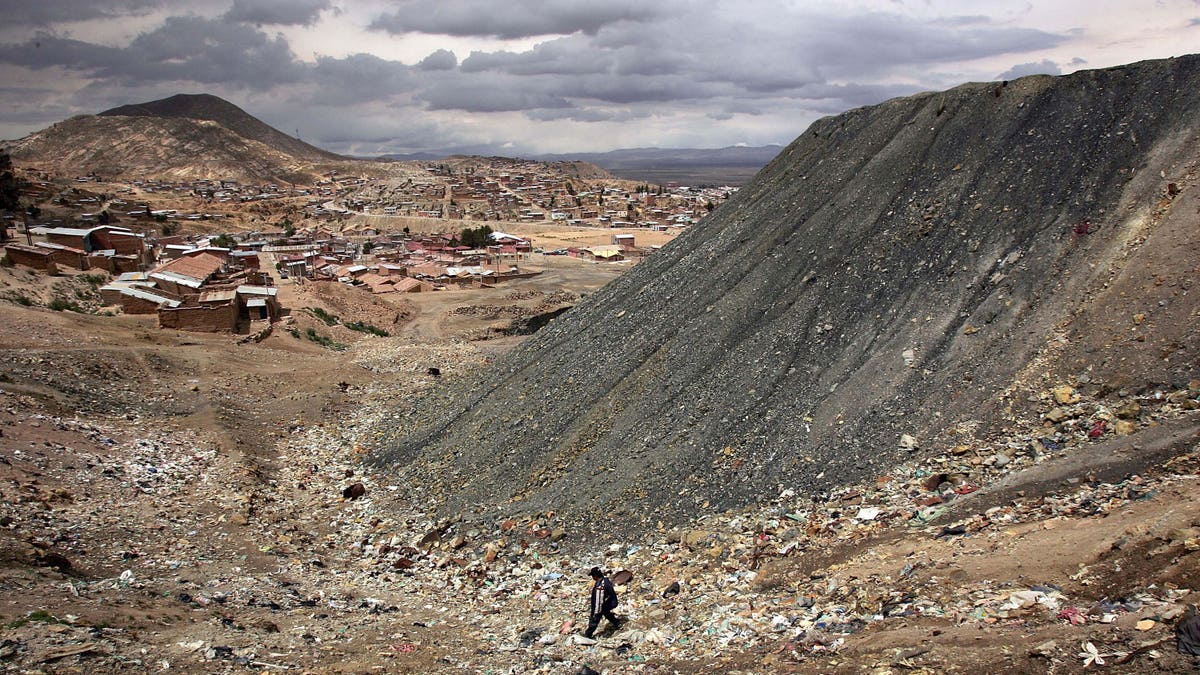
ORURO, BOLIVIA - DECEMBER 14: A miner walks past a mountain of deposits from the San Jose Mine December 14, 2005 in Oruro, Bolivia. Miners, a crucial sector of Bolivian society, have been a commanding force in the upcoming presidential elections in Bolivia, with most steadfastly behind candidate Evo Morales. Morales, a one time coca farmer and union leader, who offers what may become the most radical vision in Latin America, is leading in the polls for the presidential election which is scheduled to take place on December 18. Washington is paying close attention to the race as fears grow of yet another leftist government. (Photo by Spencer Platt/Getty Images) (2005 Getty Images)
Until recently, scientists that study the earth’s movements had thought that the worst earthquake likely to hit central and southeastern Bolivia would be a 7.5 magnitude or less. But a study published in the new issue of Nature Geoscience posits the worst-case scenario would actually be of 8.9 magnitude, comparable with the magnitude of last year’s devastating Chilean earthquake. The only difference: Chile was a lot more prepared.
Major Arturo Echalar of the Military Geographic Institute of Bolivia, who worked on the study, says that an earthquake this large could damage natural gas fields and wipe out highways that function as major arteries connecting Bolivia to Argentina. He says local towns have weak buildings that would be destroyed.
“The magnitude earthquake that our research indicates would be terrible for that place, that region, and for the habitants,” Echalar says. “Hopefully the authorities take this seriously and can put in place plans for prevention.”
Researchers from the University of Hawaii at Manoa worked for more than 10 years with colleagues from the Bolivian government and other institutions through the U.S. and Argentina gathering the research for the study.
Their measurements of seismic movement came from steel stakes that were embedded into bedrock and then tracked over this span of time.
The head researcher, Hawaii’s Ben Brooks, says that Bolivia’s worst-case scenario could be very similar to the earthquake that devastated Chile last year, killing over 500 people and affecting nearly 3 million.
In fact, Brooks says scientist J.C. Ruegg put out a very similar study about the earthquake potential in Chile just a couple years before the devastating events in that country.
“For sure our thinking is influenced by our studies of that and by other people’s studies of that process,” says Brooks.
Both Echalar and Brooks stress, however, that there is still a lot they don’t know about seismic activity in the area.
“This is not a need for panic,” says Brooks. “It’s just a greater understanding of the natural processes … that will allow the people living there to think about it and plan more effectively.”
Brooks also added that while this study reveals the possibility of an 8.9 earthquake, none of the research indicates when or even if a disaster of this size might happen.
“We really do need to study it more,” says Brooks. “It wouldn’t surprise me if it happened soon and it wouldn’t surprise me if it didn’t happen for quite a while.”
Contact Angela M. Santos at angela.santos@foxnewslatino.com or on Twitter@angelamsantos
Follow us on twitter.com/foxnewslatino
Like us at facebook.com/foxnewslatino
